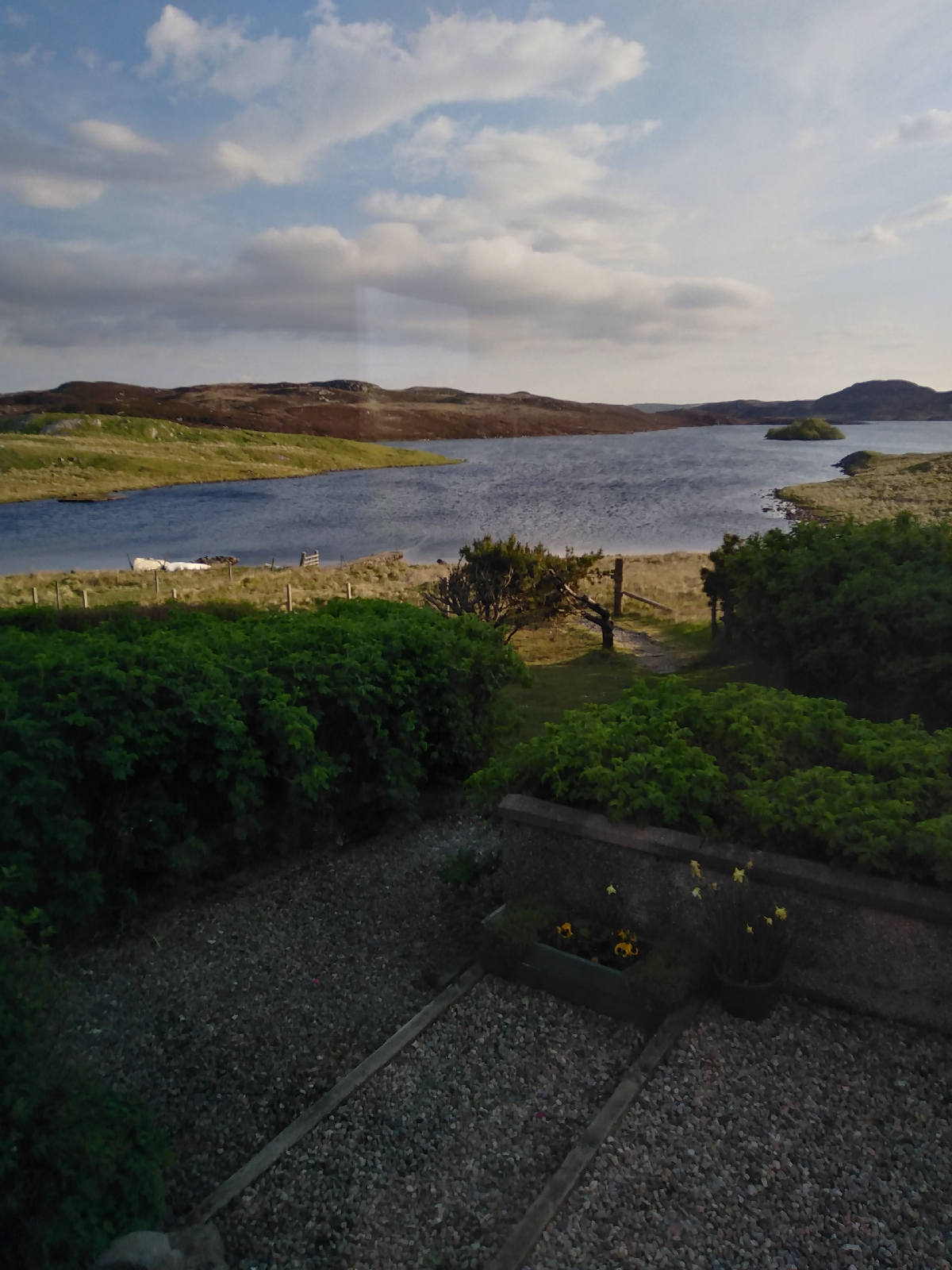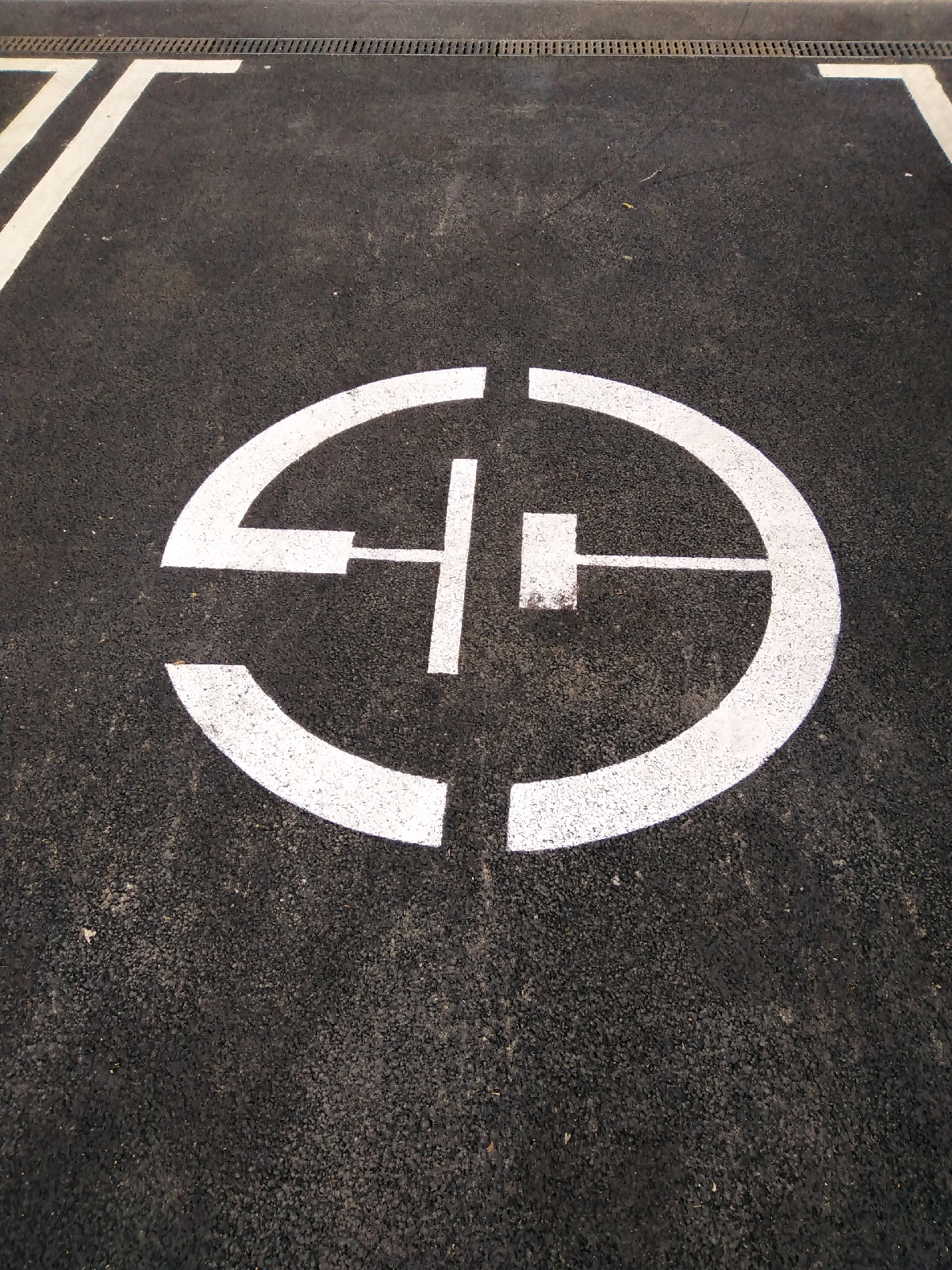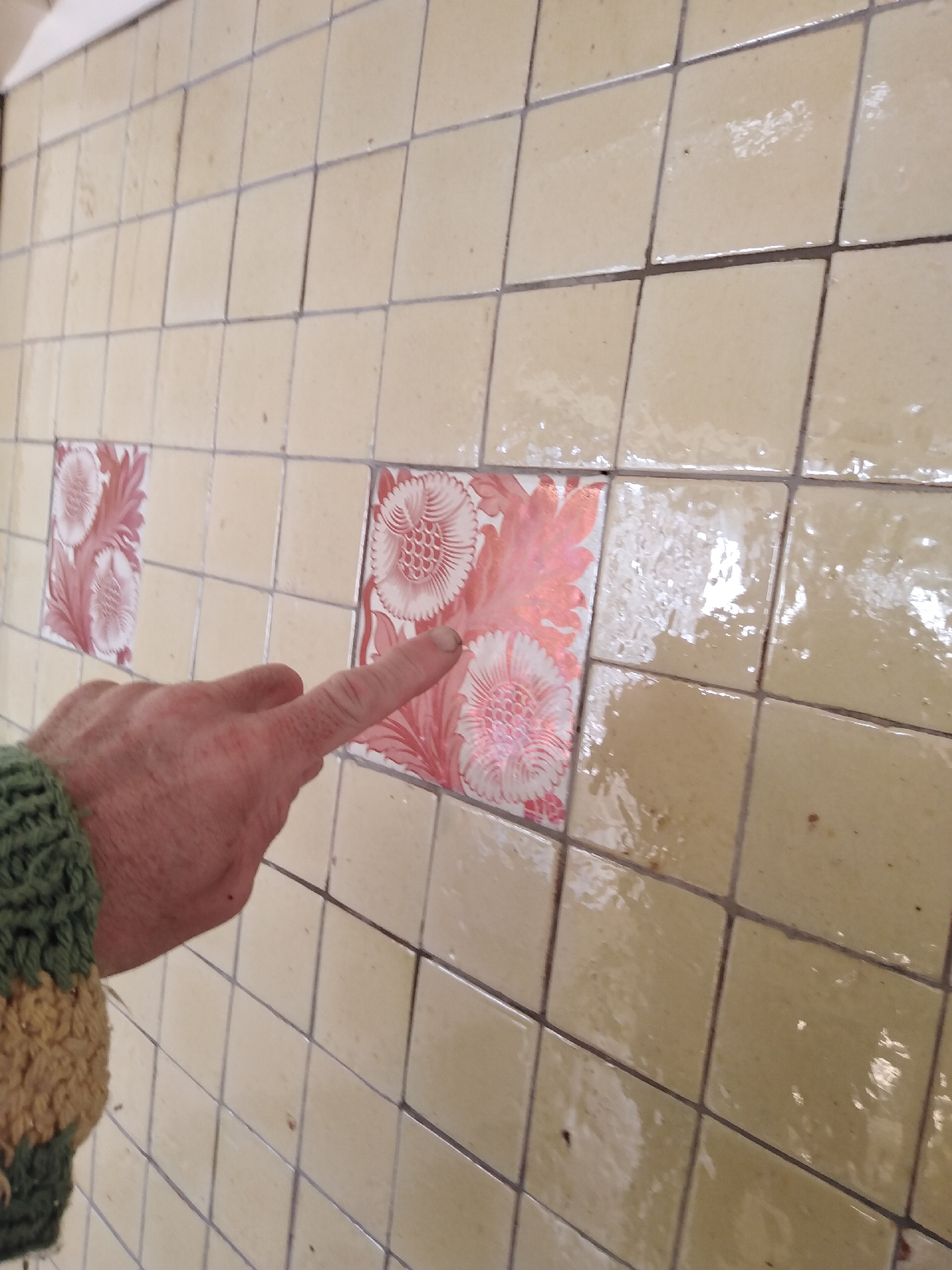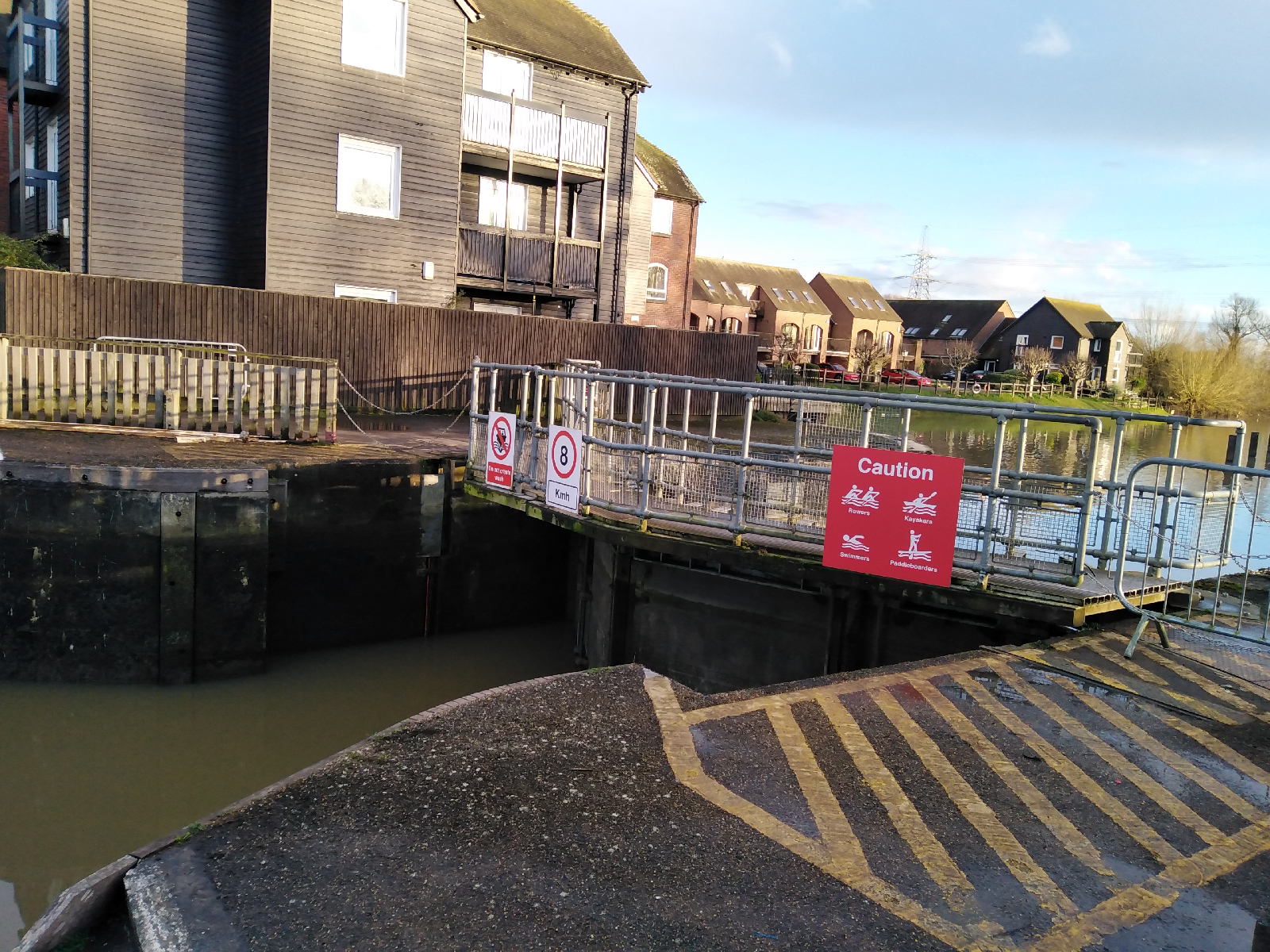It was a mistake to store a bottle of Prosecco in the loft. The high temperatures in August must have increased the pressure of the gas in the bottle to such an extent that it was able to overcome the strength of the glass. The bottle was at the orange arrow but one shard ended up a couple of metres away by the pink arrow. The temperature must have been sustained for some time to allow the thermal energy to conduct through the glass.
Wednesday, 3 September 2025
Sunday, 11 May 2025
Watching the Wind on Loch Keose
The wind gusts were stirring up dark patches on the loch. These must be tilting the water in a direction that reflects less light in my direction. Then these sections moved as coherent wholes down the loch. They can't have been moving as fast as the wind itself.
Saturday, 10 May 2025
Branching time lines
These apple trees at The Newt reminded me of branching lines that form in the time dimension as a result of decision making. Schrodinger's Cat is a famous example. Opening the box can be said to start two lines - or some would say two parallel universes. One would have the cat alive and the other dead. This branching is one way to get round the Grandparent Paradox and allow time travel.
Friday, 9 May 2025
Roman pottery
We had a brilliant pottery demonstration at The Newt. The potter explained that the minerals in clay can become aligned under pressure to form cleavage planes - this is what happens when slate is formed. This wouldn't be good in pottery so the point of working the clay on the wheel is to make sure the crystals don't form cleavage planes.
Thursday, 8 May 2025
Magnets
We had fun with this train set. We were trying to see how far apart the magnets needed to be before the V and the A attracted each other. It was about 1cm.
Amazingly, when the A was pulled to the V, it fired the locomotive away from the front. It turns out that the loco and the front car have same magnetic poles and are weakly repelling. I'm not sure how they can actually hold together but the impact of a push from the back fires the loco from the front.
Wednesday, 7 May 2025
Water jets
This feature at The Newt has jets of water being fired from the toads when sensors are triggered.
The sensors are located in recesses and seemed to be sensitive to light, or rather, the lack of it. If it were an LDR, dark would mean high resistance so could change a logic gate. The jet sprayed as soon as the sensor was covered. It wasn't triggered on the release back into light. It occurred to me that there would be a problem with this at night so either there is an overall timer or I am wrong and it is about beam breaking.
Tuesday, 6 May 2025
Changing wavelengths
When I was young this pylon at Barrow AFC used to house the flood lights. Now it houses mobile phone aerials. It still houses electromagnetic waves but the wavelength has increased from visible to radio wave.
Monday, 5 May 2025
Fish out of water
This amazing set-up at The Newt got me thinking. How did they get the water into the rectangular tank and to stay there? If I were doing it on a smaller scale in the lab, I'd have the rectangular tank inverted, fill it to overflowing with water, seal it, flip it over and into the water, then remove the seal.
Tuesday, 22 April 2025
Interesting solar panel array
This solar powered pump at RSPB Ham Wall has 3 solar panels. One faces south, one south east and one south west to ensure that one of them might be at almost full power at any point on a sunny day. Three facing south would give a higher max power output but I'd guess the average might be higher with this set up.
Saturday, 19 April 2025
Gridserve battery symbol
I hadn't noticed that the branding at the motorway services contains the circuit symbol for a cell. That's because I normally put the longer positive line on the left. I realised when I approached from the other direction.
Friday, 18 April 2025
Spiral galaxy
This foam in a stream reminded me of a spiral galaxy. One problem has been traying to explain why the spiral arms remain stable. In theory they should end up tightly wound round the centre. Apparently it might have a lot to do with density waves but I'll need to read more about that.
Thursday, 17 April 2025
Iridescent tiles at Blackwell
I liked the early iridescent tiles at Blackwell. It was hard to capture the colour shifts on camera. The principle is that light reflects from the top surface and also from a layer just underneath. The light that goes to the layer underneath will have travelled a tiny bit further and so will be slightly out of phase with the reflection from the top layer. Because light is made of many wavelengths, which are the colours that we see, at different angles the path difference for one colour may become a whole wavelength so there is constructive interference and a colour is seen.
Wednesday, 16 April 2025
India survey
I was interested in this display at Rheged. Firstly that the survey of India was done as a series of triangles extended into long lines. Secondly, I had not come across Plane Table surveying. It seems to be a way of plotting a map at the same time as the survey measurements are taken. The table needs to be levelled and it has a plumb bob to help with this. Sight lines to points are measured. If the distance is known, the map can be made radially from a central point. In mountainous areas where horizontal distances are hard to measure you line up the same features seen from 2 known points and where the sight lines intersect, you can plot intermediate points.
Tuesday, 15 April 2025
Heavy snow
I didn't have a tape measure with me in the Glencoe Visitor Centre but from measuring bags of sugar at home I estimate the box to be 35cm on each side. That would give a volume of 43 x 10^3 cubic centimetres and a density of snow of 28 x 10^3/43 x 10^3 = 0.65 grams per cubic centimetre. This would make it firn, which seems unlikely. But if the box is actually 40cm on each side, density comes down to 0.44 g/cm^3 which is almost down to the density of wind-packed snow. I should have taken the tape measure!
Monday, 14 April 2025
Natural ripple tank
It was amazing the way that the sunlight projected the wave pattern onto the pebbles in the ford in Glen Gartain. End of a wonderful day on Buachaille Etive Mor.
Saturday, 22 March 2025
Yet another contrail
Clear skies have made it a good time for contrails. With this one it was the way it spreads apart in places and comes together in other places to make quite a regular pattern that looks like the loops I used to draw in class for stationary waves. I've always thought the contrails are manipulated by high altitude winds but I can't see how winds can pull two trails in opposite directions or push them together.
Friday, 21 March 2025
Equinox sunset time
We revisited the 3 amazing stone circles above Boot for the Equinox. I noticed going home that the Sun still had a while to set and it was beyond 6pm. Now on Equinox, logic would say to me that sunrise should be 6am and sunset 6pm. That got me thinking. It probably works at sea level on the Greenwich Meridian in this country. Sunset is always later here on the west coast than in London. Today we are 15 minutes later than in London but that doesn't account for all of the time difference I noticed. This article explains about which part of the Sun the measurement is taken from and also about equilux day.
Monday, 17 March 2025
Strange contrails
I was intrigued when one plane came over leaving a contrail which looked like the white line dashes down the middle of a UK road. Camera wouldn't focus and it began to break up. But then another came past very soon afterwards and did exactly the same thing - it's the one on the left in the picture. I can only imagine that there are bands of slightly different humidity up there. It was a windy day, the sort when stationary waves form in the air over the mountains. The usual sign is lenticular cloud. Maybe it was such a day but with air humidity too low for cloud formation. Then the aeroplane exhausts might seed condensation in the more humid parts.
Sunday, 16 March 2025
Shap meteorological station
We know that Shap is used by the Met Office in forecasts but we've now found what must be their data gathering station in Wet Sleddale. I don't think this site is for this Met Office weather station. When I looked at it recently it said the page was last updated in May 2022. But it does say about the data package it was using which was interesting.
Saturday, 15 March 2025
Growing biofuel
On Great Burney we found these enclosures of willow that will be being grown to be chipped for power stations. It's really interesting to see this use of the land because coppicing for charcoal was an industry in the area for centuries until recently. An interesting modern take on a traditional industry.
Friday, 14 March 2025
Partial eclipse of the Moon
Up early this morning to look at the Moon. At first sight, it didn't look anything unusual but then the penny dropped that this was actually a Full Moon. Earth's shadow was covering part. I should have looked closer to see how the shadow compared to a normal moon terminator.
Thursday, 13 March 2025
Why are there so many granite erratics?
This is the Gray Bull in Wet Sleddale - it is the largest of the Shap granite erratics around but there are a lot of them, deposited by glaciers during the last Ice Age. I always notice erratics more in the Shap area and am wondering why. Is it that this granite is more prone to being carried by glaciers? Is it that this beautiful stone is so obvious that I notice them more? Or is it that this area is rolling wet moorland with few crags? It hasn't been improved much as farmland. I'm guessing it must be a combination of the second and third reasons.
Wednesday, 12 March 2025
Tanker earth wire
We were parked behind this tanker when I noticed a coil of green and yellow wire on the back. That's the Earth wire. The process of driving on insulating tyres causes charge to build up on a vehicle, giving it a high potential. Earth has a potential of 0V. This can cause sparks as the potential difference causes electric charge to flow, with maybe explosive consequences if the tanker contains powder or flammable liquid. The Earth wire must be connected to the ground before the vehicle is emptied.
Monday, 3 March 2025
Gregorian Calendar
I spotted St Gregory in the window of the church at Welford Park, of Bake Off fame. He is the patron saint of this church. In the window, he is a pope and I assumed he was one responsible for the Gregorian Calendar. I was only 1000 years out. It was a later Gregory who instituted the reform whereby the leap year day is removed on the start year of every fourth century. There was also some correction of dates to get the Spring Equinox back to March 21st. This is all important to get the date of Easter correct. If you're not familiar with that controversy, try Bede's Ecclesiastical History of the English People. It was this first Pope Gregory who sent the missionaries to the Saxons that led to the controversy in the British Isles. The calendar stuff is all because the orbit of the Earth round the Sun is not perfectly a whole number of rotations of the Earth.
Friday, 28 February 2025
Thursday, 27 February 2025
Stationary waves on the Eden at Rockcliffe
This morning the tide was coming in up the Eden backed by a strong wind. As we walked downstream, the water stopped flowing out to sea. Instead we found a patch of choppy water where the waves didn't make any progress. Stationary waves form when two sets of waves travelling in opposite directions run into each other. In the lab, these have to be of same speed and frequency. I doubt that's strictly true here. In such a stationary wave pattern, I wonder how deep it goes down and whether there is a net flow of water below. It would need to be out to sea because otherwise the water down the Eden would spill over the sides. Also whether the particles at the surface move through the pattern in equal numbers in opposite directions or whether they are stalled and vibrating up and down.
Wednesday, 26 February 2025
Literal geological map
Outside the Bill Bryson library in Durham there is a geological map of the British Isles set into the pavement. What is best about it is that each part is made of the rock that is found there. This is Cumbria. So there is the ring of sandstone with limestone flanks and different igneous in the middle. A great way to visualise what is going on.
Tuesday, 25 February 2025
Generator and diodes
I loved this dynamo setup in the museum in Kirkwall. The lights are diodes so they only allow current to flow in one direction. One has been set to allow current forward and the other to allow current back. It is a brilliant way of showing that the direction of current depends on the way the dynamo is rotated.
Monday, 24 February 2025
Barytes - Potts Gill mine
Potts Gill mine above Caldbeck produced barytes. I've known the name for decades but never studied it. Turns out it is barium sulfate. It has a whole series of applications including fillers in paint but I have come across barium meals for CT scans because it does not allow X-rays through. I've also been reading about its use in drilling fluid where its density helps to stop fluids leaking out of the rocks into the borehole and causing a blow out.
Subscribe to:
Comments (Atom)

















































